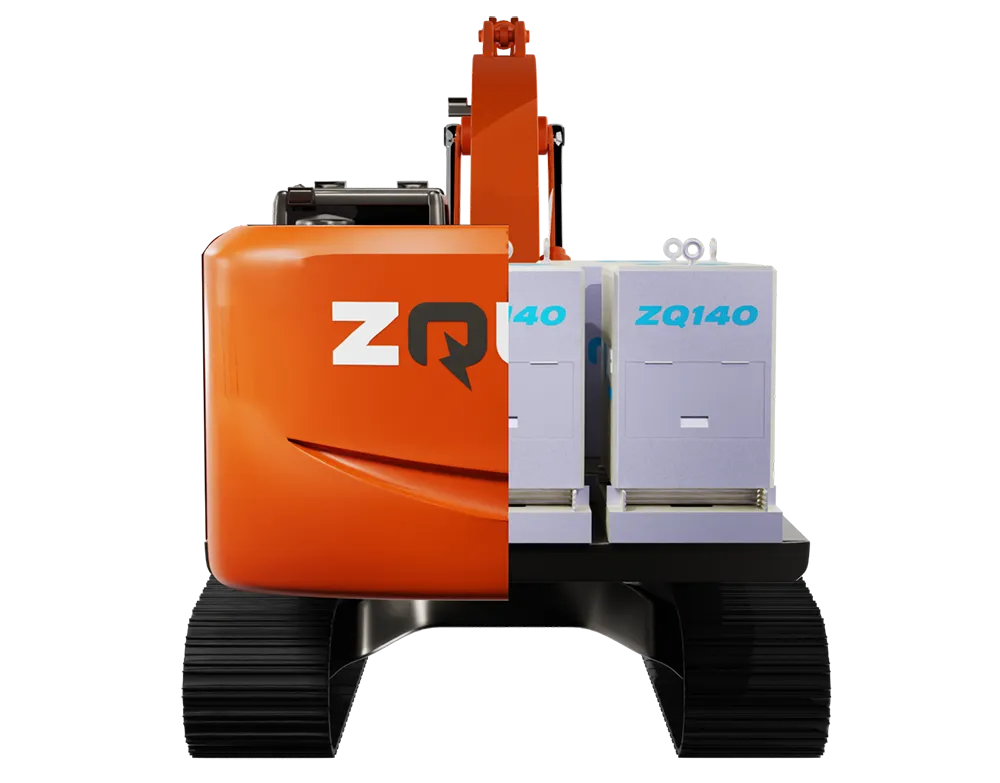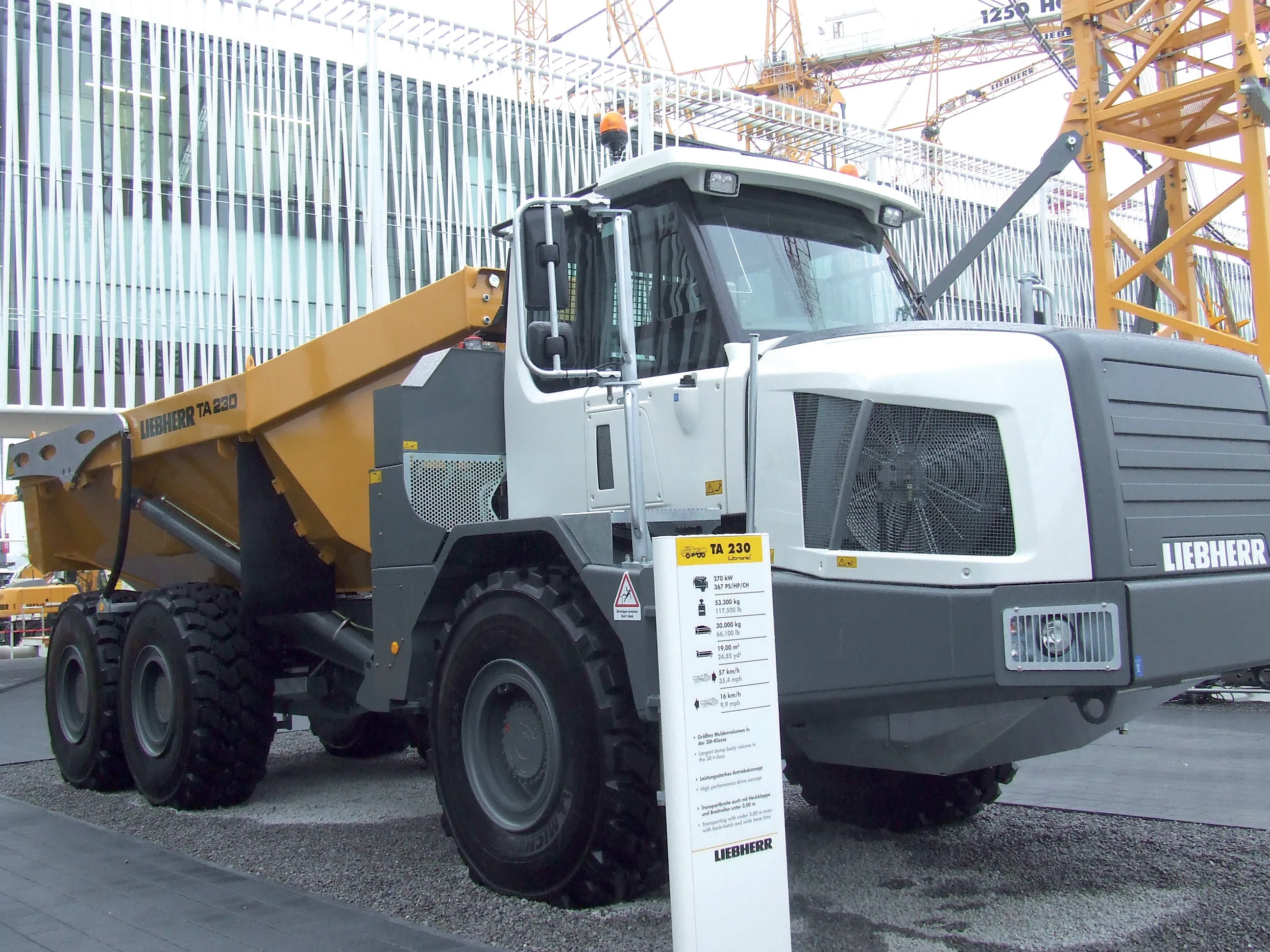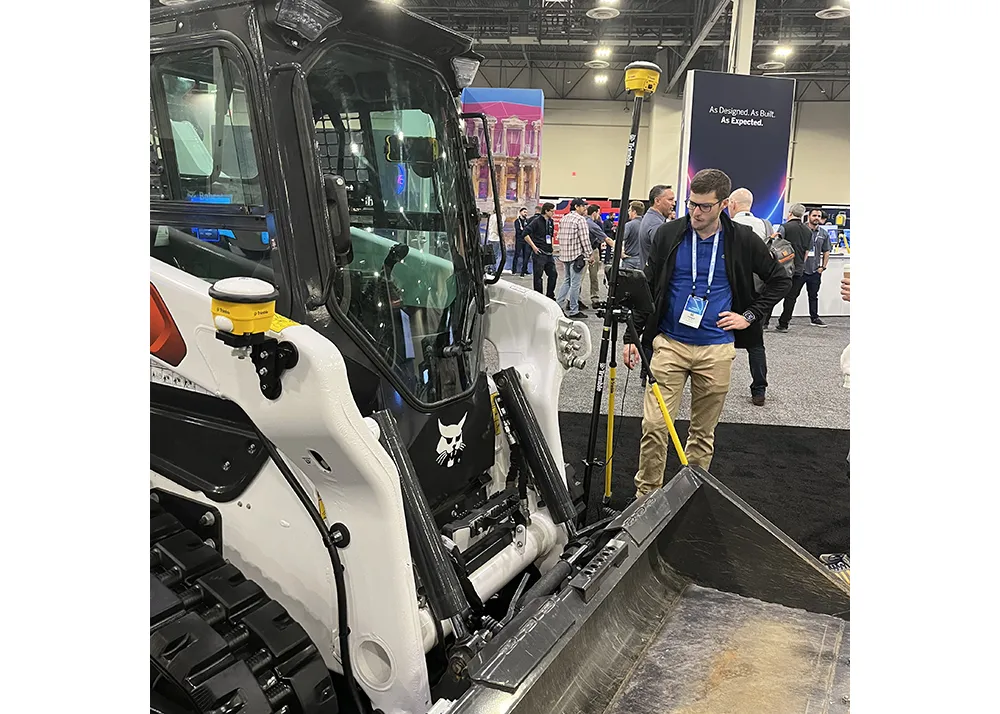
Moog Construction is offering the novel electrification retrofit kit from subsidiary Zquip for repowering machines in the construction, rental and quarry markets. This modular system can be installed in machines such as excavators and wheeled loaders in the 5-50tonne range and from any manufacturer.
Scott Scheffler, marketing director of ZQuip commented, “We’re trying to make it easy for people to get into electrification in a more cost-effective way. With our solution, the batteries are swappable and fast charging. The machine hydraulics do not change at all.”
The package consists of the ZQuip batteries, an electric motor, a smart controller and a thermal unit to optimise battery temperature. Customers can select either 70kW/h batteries or 140kW/h batteries, depending on the application. These have the same footprint to ease installation and use the same base although the 70kW/h units are shorter and weigh 700kg while the 140kW/h units are taller and weigh 1,250kg. Depending on the installation and machine type, customers can select the optimum number of batteries as required.
Fast recharging allows recharging within one hour and the system comes with standard plugs and connectors. Batteries can be exchanged in just five minutes using a forklift truck or handling machine if more power is needed for the machine to keep on working. Rental firms can leave machines onsite and deliver freshly charged batteries if required or customers can use a charging station at the worksite. The smart controller draws power from one battery at a time and a display in the machine cab shows how much charge remains. Scheffler said, “You’re able to keep machines running all day either by exchanging batteries or recharging. “We’re making it easy for customers to adopt electrification.”
The system can be used in a wide array of applications and is of benefit to firms running mixed fleets of machines as it allows them to use the same modular battery technology. The power units can be exchanged between different pieces of equipment if required. According to the firm, the system is already being accepted by equipment dealers and comes with warranties.








